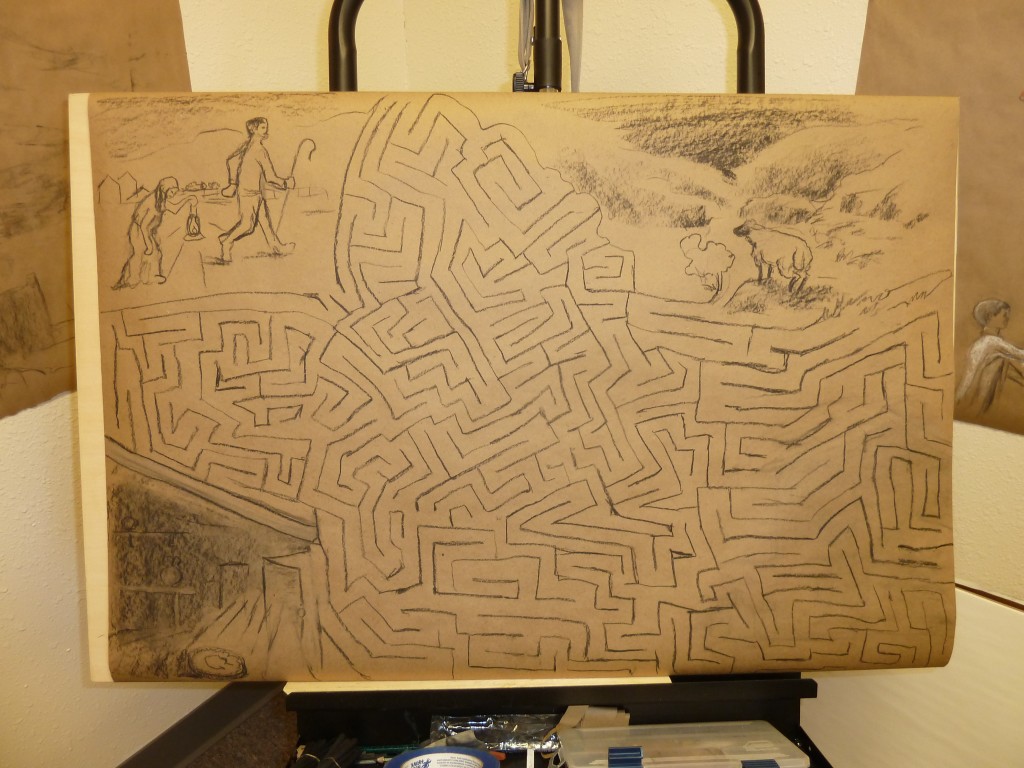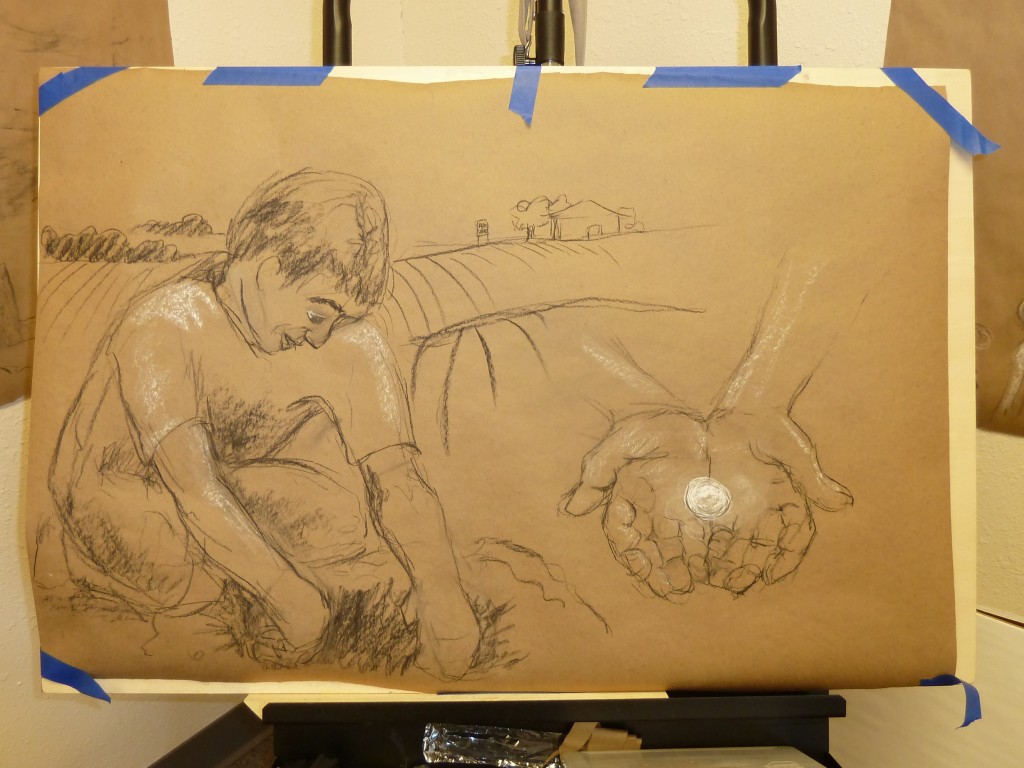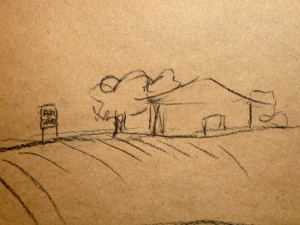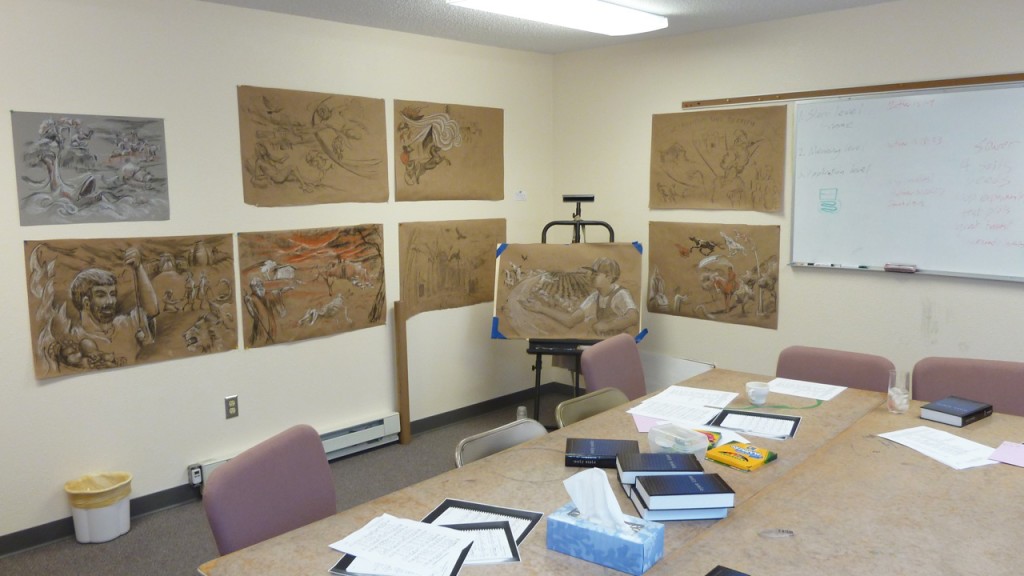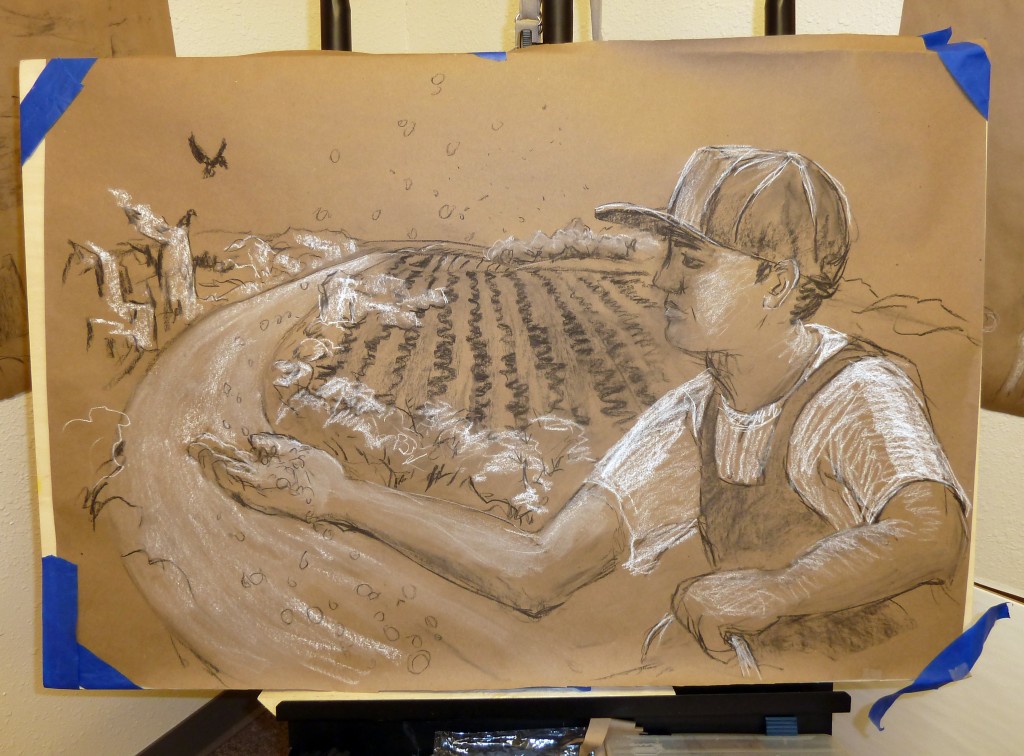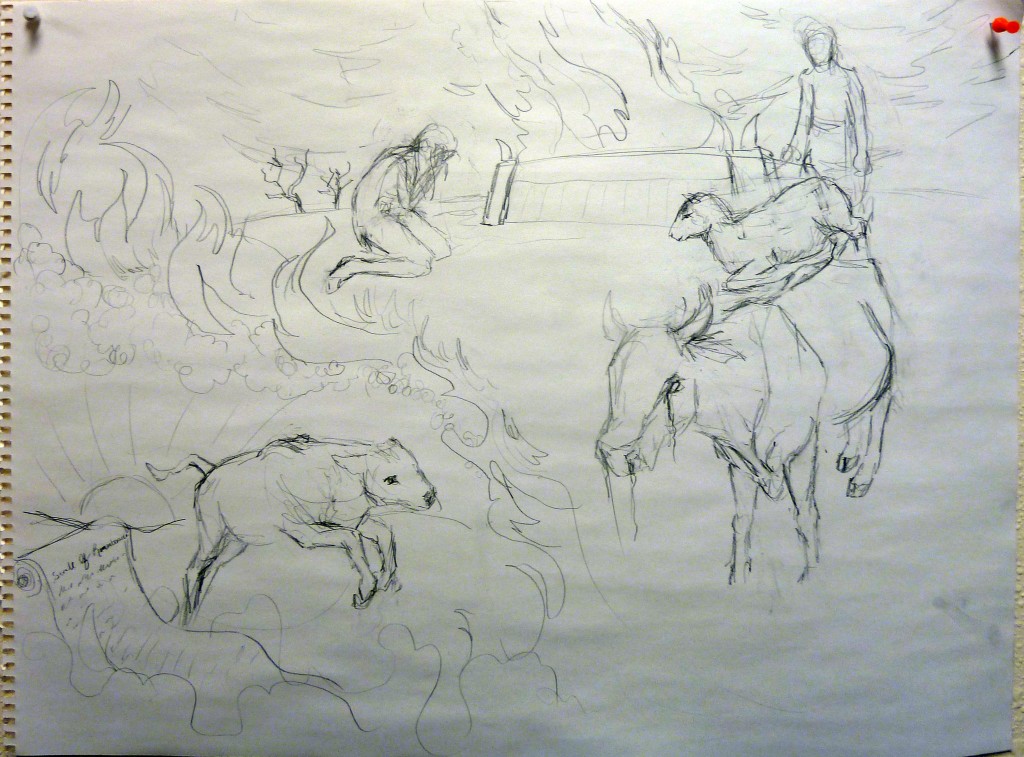My new Sunday school class with Andrew Friend, “Exploring our Hymnals,” kicked off earlier this month with a look at Lift Up Your Heart’s section on Teaching and Miracles.
Lift Up Your Hearts is organized into two divisions: The Story of Creation and Redemption and Worshipping the Trinune God. The latter has sections of hymns running through an order of worship: Opening of Worship, Called to Be Holy, Hearing the Word, Confessing Our Faith, Receiving the Sacraments, Living Our Baptism and Sent Out (each with subsections). The Story of Creation and Redemption division wraps the liturgical calendar into the larger story of God and his people. The sections are: Old Testament Life and Witness, Advent Expectation, Christ’s Life, Christ’s Passion and Exaltation, Joining in the Spirit’s Work, Trusting in the Triune God, and Hope for Things to Come.
The Christ’s Life section has six sub-sections: Christmas, Epiphany, Baptism of Our Lord, Teaching and Miracles, and Transfiguration and Lenten Journey. We chose Teaching and Miracles as our starting point because it is one of just four subsections we haven’t sung from at all since adopting the hymnal last year.
Of the 14 hymns in Teaching and Miracles, five can be found in Sing! A New Creation and eight are in Singing the New Testament, a Faith Alive hymnal of songs derived directly from specific New Testament passages. Of its 260 hymns, only nine (!) were included in Lift Up Your Hearts (according to this great spreadsheet). Among our discussion topics Sunday were why these sort of hymns are so unpopular and how to use them during a worship service (other than the obvious use as response to one of the source passages).
Jesus Calling Disciples and their Response
“Tú has venido a la orilla/You Have Come Down to the Lakeshore” (LUYH #116/SNC #269) was composed by Cesáreo Gabarain, a Spanish priest involved in post-Vatican II liturgical renewal, following a visit to the Sea of Galilee. We used to sing it regularly from Sing! A New Creation, usually as a closing hymn. The song is from the perspective of a fisherman being called to be Jesus’ disciple. Here’s the refrain:
O Lord, you have looked down into my eyes;
kindly smiling, you‘ve called out my name.
On the sand I have abandoned my small boat;
now with you I will seek other seas.
In my view (which was not held by everyone in the class) the tune (sample here) is extremely boring.
“Jesus Calls Us, O‘er the Tumult” (LUYH #121/PH87 #553/PH57 #459/PH34 #443), a better song about Jesus calling disciples, is one of the 70-some perennial hymns to appear in all four main CRC hymnals. It was written by Cecil Alexander for St. Andrew‘s Day (1852). [Alexander also wrote “Once in David’s Royal City” (PH87 #346), but has no other hymns in LUYH.] The earlier hymnals had four stanzas, but LUYH adds a fifth (“Jesus calls us from the worship of the vain world’s golden store…”). The tune is GALILEE.
Jesus calls us; o’er the tumult
of our life’s wild, restless sea,
day by day his voice is sounding,
saying, “Christian, follow me.”
“Come to Me, O Weary Traveler“ (LUYH #123/SNT #56) was written in 1991 by Sylvia Dunstan, a prison chaplain, “on a commuter bus [in 1991] after a particularly bad day (visiting inmates) at the jail” and is based on Matthew 11:28-30 (“Come to me, all you who are weary and burdened…”). [Her other compositions include “You, Lord, Are Both Lamb and Shepherd” (LUYH #225), “All Who Hunger, Gather Gladly” (LUYH #534) and “Go to the World” (LUYH #925).] The tune is AUSTIN.
“Somlandela”/“We Will Follow” (LUYH #129) is a traditional Zulu hymn that we agreed would make a lively closing song. It’s a response to Jesus’ call, promising to follow him “through the valleys,” “to the mountains,” “in the city,” “in our classroom,” and “in our calling.”
“I Heard the Voice of Jesus Calling” (LUYH #128) is an Iona Community hymn that reports various things Jesus said. Here is stanza 1:
I heard the voice of Jesus calling;
here’s what he said to me:
If you don’t let me wash your feet,
I can’t your Savior be; no, I can’t your Savior be.
Subsequent stanzas have Jesus saying “All that you do for the least of these—that’s what you do to me”; If you have ears to hear, then hear; if you have eyes, then see”; “This is my body, given for you—why don’t you taste and see?” et cetera (there are seven total stanzas). Why these particular sayings were chosen is unclear to me. The song could be used as an offertory or elsewhere depending on the choice of stanzas.
Jesus’ Parables
I’m going to write another post on parable hymns once I start posting Naomi’s artwork from our parables class. We sang parable songs in that class (usually with guitar); most were either from Singing the New Testament or Selah Publishing’s And Jesus Said, a collection of 55 parable songs. Only four parable songs made it into Lift Up Your Hearts.
“The Kingdom of Our God Is Like” (LUYH #118/SNT #34) is based on the five parables from Matthew 13: the Hidden Treasure, Mustard Seed, Yeast, Pearl of Great Price and Net. The lyrics are by Christopher Webber. The tune (DOVE OF PEACE) is from Southern Harmony (1835).
“Keep Your Lamps Trimmed and Burning” (LUYH #119/SNT #47) is a great African American spiritual based on an image from the Parable of the Ten Bridesmaids. I’m skeptical that our congregation could sing it in the style it should be.
“Far from Home We Run, Rebellious” (LUYH #122/SNT #40) is one of only two songs from And Jesus Said to be included in Lift Up Your Hearts, but with a different tune. The lyrics, by Herman Stuempfle, put the singer in the position of the prodigal son.
Far from home we run rebellious,
seeking cities bright with dreams
casting loose from love that claims us,
craving life that glitters, gleams.
And Jesus Said sets the song to RESTORATION. Singing the New Testament and Lift Up Your Hearts uses GOTT WILL’S MACHEN by Johann Ludwig Steiner (1723). Steiner’s minor mode melody is used for the first three stanzas, about the experience of the prodigal in rebellion. Norma de Waal Malefyt wrote a major alternative for the final three stanzas, about the father’s greeting. The final stanza (about “bread and wine for celebration” make this a fine communion song . It could also be used for our confession/assurance of pardon section.
“A Sower’s Seed Fell on a Path” (LUYH #124/SNT #33), also by Herman Stuempfle, has four stanzas for each of the four places the seed falls in the Parable of the Sower. It is set to MORNING SONG, the mostly commonly used tune (five times) in Lift Up Your Hearts. It would be good song for illumination before the message because of its refrain: “Lord, give us ears to hear your Word and hearts where seed can grow.”
Sermon on the Mount/Jesus’ “I Am” Statements
“Blest Are They” (LUYH #117/SNC #122/SNT #19) is David Haas’ versification of the beatitudes, which we were were familiar with from Sing! A New Creation. [Eight hymns by Haas are in Lift Up Your Hearts, including the short Psalm 27 song “The LORD Is My Light and My Salvation” (PFAS #885/PFAS #27H/SNC #206)]. A sample is here. This excellent humn could be used as a response to our confession/assurance section, among other place in the liturgy.
“Look and Learn” (LUYH #120/SNC #186/SNT #24/SWM #110), based on Matthew 6:23-24, is a Korean hymn by Nah Young-Soo, translated and adopted by John Bell for the Iona Community. A sample is here. This is another good song that could work as a response to our confession/pardon section. Here is the first stanza:
Look and learn from the birds of the air,
flying high above worry and fear;
neither sowing nor harvesting seed,
yet they’re given whatever they need.
If the God of earth and heaven
cares for birds as much as this,
won’t he care much more for you,
when you put your trust in him?
“Jesus the Lord Said, “I Am the Bread” (LUYH #125/SNC #121/SNT #27) is an Urdu hymn versifying Jesus’ seven “I am” statements in John. Giving a verse to each statements, it’s very repetitive. The tune is here.
Jesus’ Miracles
“Jesus Heard with Deep Compassion” (LUYH #127/SNC #124) has modern lyrics by Joy Patterson set to PLEADING SAVIOR from J. Leavitt’s Christian Lyre (1830) [the tune used for “As We Gather at Your Table” (SNC #245) in Sing! A New Creation]. Despite the section’s title “Teaching and Miracles,” I believe this is the only one to focus on Jesus’ miracles. The first two stanzas address Jesus’ treatment of “outcasts, weak or sinful, scornful or poor.” The third calls for us to do the same. Here is the first stanza:
Jesus heard with deep compassion pleas for
healing, cries of pain;
cured the lame and cleansed the leper, gave the
blind their sight again.
At his voice, tormenting spirits fled a madman’s
tortured mind;
clothed and healed, he went rejoicing, home and
family to find.
Singing the New Testament includes 15 hymns in its Christ’s Miracles section, none of which I’ve heard of.
Psalm 49
“Come, One and All” (LUYH #126/PFAS #49B)) is a Psalm 49 setting that is in this section of Lift Up Your Hearts for some reason. Because the title sounds like something Jesus would say? The tune, KIÚ-JĪ-IT, is a very catchy Asian melody; the performance notes recommend that it “should not be sung forcefully, but gently, as a wise bard sharing ancient proverbs.” The lyrics, by Martin Leckebusch, capture the main ideas of the psalm, which addresses the folly of those who put their trust in wealth, which can’t save them from death. Here is the first stanza:
Come, one and all, from near and far,
to share the insights I have found:
a heart which has been taught by faith
informs the wisdom I expound.
I like the song, but I’m not sure when we’d sing it. The Revised Common Lectionary assigns Psalm 49 only once, as part of the alternate stream in Year C. I suppose it could be a response to a message related to Jesus’ teaching on money.
Since it’s unlikely we’ll ever have full a class on Psalm 49, I’m going to use this occasion to do a brief overview of the other Psalm 49 settings in CRC hymnals.
“Let Not the Wise” (PFAS #49C) is the other hymn setting in Psalms for All Seasons. It consists of a short stanza (“Let not the wise glory in their wisdom. Let not the mighty glory in their might. Let not the rich glory in their riches, let those who glory, glory in the LORD.”) and two spoken parts, based on vv. 1-3 and vv. 10-12.
The PFAS responsorial is “Teach Us, Lord, the Measure of Our Days” (PFAS #49A).
The gray Psalter Hymnal’s Psalm 49 setting is “Listen, All People Who Live in This World” (PH87 #49), another original (non-rhyming) versification by Helen Otte. It is set to JULIUS. The earlier Psalter Hymnals have two settings from the 1912 Psalter: “Hear This, All Ye People, Hear” (PH57 #90/PH34 #96), set to FISK, and “Dust to Dust, the Mortal Dies” (PH57 #91/PH34 #97), set to WATCHMAN.
